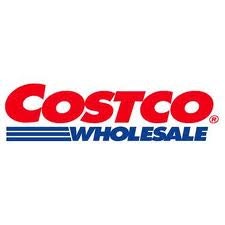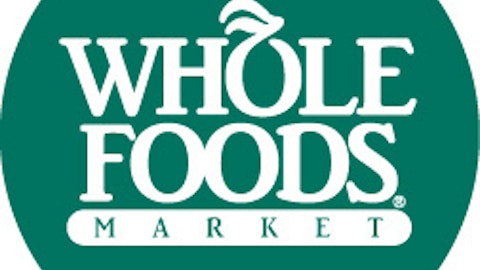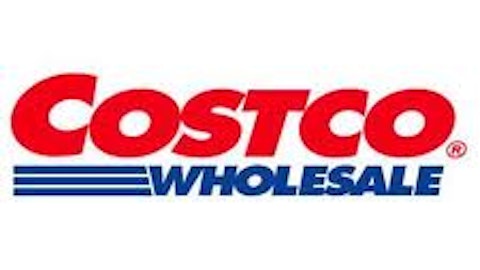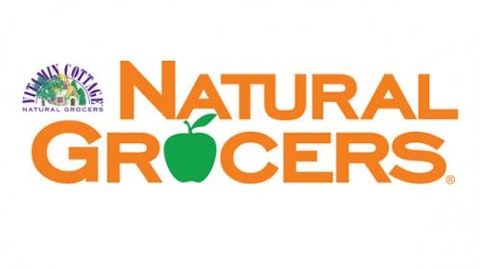
What’s the reason behind this growth?
The real question is: What is so innovative about these two companies? The innovation is the overall package that both companies provide; for Costco Wholesale Corporation (NASDAQ:COST) it is the per unit savings due to high volume buying, meanwhile Whole Foods provides a premium organic product that young parents and health savvy individuals are being drawn to in increasing numbers. Both companies have had considerable growth in the last four years; Costco Wholesale Corporation (NASDAQ:COST) has risen from $52 a share beginning 2009 to its current price of $119, that’s a 211% increase in four years; meanwhile Whole Foods has had a spectacular rise from $10 in 2008 to a current price of $101, a whopping 1001% price increase. Can these two companies continue their spectacular growth?
From General Store to Grocery Store
Historically innovation in the food place has been in offering a greater range of products. A&W was the largest general store chain of the 19th century; they provided towns with the necessary products needed to survive. All a shopper had to do was give the clerk their grocery list, and he would bag all the goods for them and ring up the bill. While this worked just fine, the issue arose that the customers were unaware of the products available to them; the clerk decided what to give each customer based on what he felt they could afford. This problem was solved with Clarence Saunders’ “Piggly Wigglies” in 1916. The first true self service grocery store was also the first chance for serious marketing in the super market. The layout was literally a snake; you would enter through a turn style, and walk up and down every single aisle until the checkout counter was reached. Prices were on every item, packages were made brighter to attract shoppers to new brands, and of course the candy was next to the checkout counter. Fortunately, super markets no longer force you to walk down every aisle; but the self-service model pioneered by Saunders was here to stay. A race began to offer a wider selection of goods to the market goer, and with this came many new innovations such If the consumer is choosing, then a wider variety of goods needs to be made available to suit the preference of every individual. This trend towards a wider range of goods has continued into the 21st century resulting in a need of order in the market place, and consequently the development of the Bulk and Organic niche markets
The Healthy Choice – Whole Foods
Whole Foods Market, Inc. (NASDAQ:WFM) $11.7 billion in sales for 2012 accounts for 2% of the overall U.S. supermarket industry, but I predict this to continue to grow as Whole Foods Market, Inc. (NASDAQ:WFM) plans to build over 1000 new stores, that is three times as many stores as they currently have. The driving force behind the success for Whole Foods is the increase in demand for organic food. Whole Foods Market, Inc. (NASDAQ:WFM) has its own niche market and their shoppers are die hards; once they go organic they never come back to processed foods. This commitment becomes so strong that many ‘purists’ claim to feel ill after eating any form of processed foods. If customers are truly committed, then growth is the logical conclusion as more and more individuals are affected by the growing trend. It is impressive that Whole Foods Market, Inc. (NASDAQ:WFM) has been able to succeed as a premium good during the recession; typically inferior goods improve during a recession while premium goods’ demand declines. Whole Foods Market, Inc. (NASDAQ:WFM) defied this logic, but why? To start, Whole Foods has a very open, classy atmosphere that allows their customers to see exactly what they are buying. In addition to this, all Whole Foods stores are new stores, while this may seem inconsequential, people are willing to pay a little extra for a store that looks and feels modern. With the intangibles aside, it is the organic products that create the greatest draw. According to the FDA, over the past 5 years organic food consumption has risen 9% per year. With this steady growth in demand, and Whole Foods planned expansion, they are positioned to reap the benefits of the organic food craze better than any other company.
Does Bulk Equal More Value?
At Costco Wholesale Corporation (NASDAQ:COST) it seems as though everyone loves bulk, brand names, and bargains. The success of Costco is no surprise; during the recession people wanted to save, and Costco Wholesale Corporation (NASDAQ:COST) provided those savings. Jeffrey Long, Costco’s senior vice president and general manager for the northeast region, attributes their growth during the recession to, “The value. When times are tough, people really start paying attention to what they’re getting.” The quality of product at Costco is consistently high; Kirkland brand provides bargains while name brands are available at a discount for the bulk purchases. In addition, Costco limits the number of products they shelve; they conduct extensive consumer research and only have the best brand name deals available. Costco Wholesale Corporation (NASDAQ:COST) has an 86% membership retention rate, with membership fees alone drawing in over $386 million dollars. With a strong product, and high retention rates, Costco is a buy.
Conclusion
Traditional supermarkets have stagnated against the innovative business models of Costco and Whole Foods Market, Inc. (NASDAQ:WFM). Both are strong buys with customer loyalty and consistent growth during the recession. It will certainly be exciting to watch the success of both as America’s economy expands once again.
The article The New Age of Supermarkets originally appeared on Fool.com and is written by Rob Byrnes.
Rob Byrnes has no position in any stocks mentioned. The Motley Fool recommends Costco Wholesale (NASDAQ:COST) and Whole Foods Market (NASDAQ:WFM). The Motley Fool owns shares of Costco Wholesale and Whole Foods Market. Rob is a member of The Motley Fool Blog Network — entries represent the personal opinion of the blogger and are not formally edited.
Copyright © 1995 – 2013 The Motley Fool, LLC. All rights reserved. The Motley Fool has a disclosure policy.


